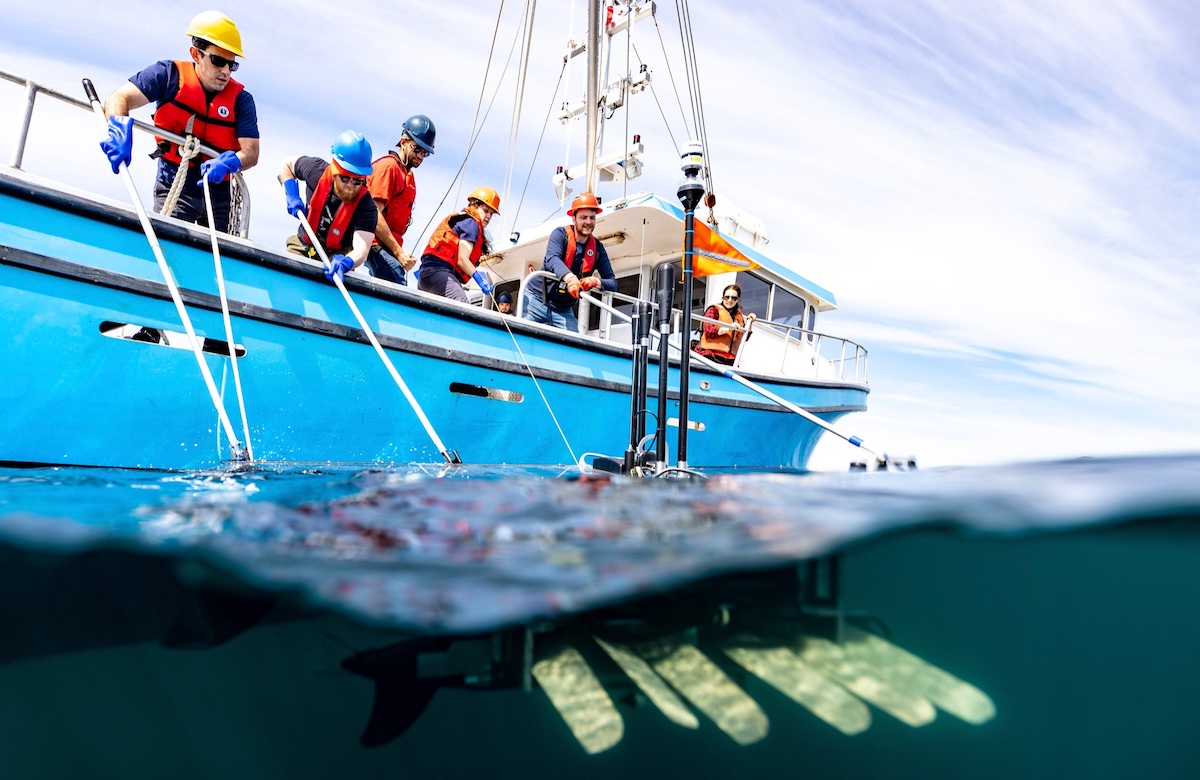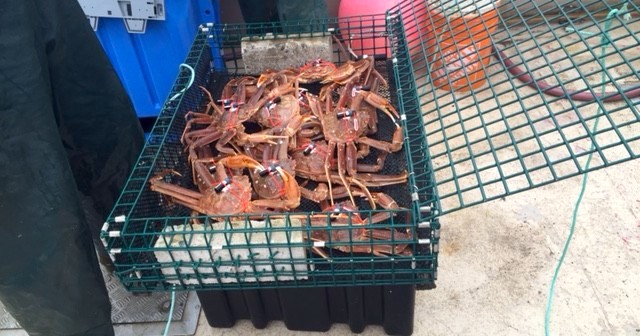Customer
Ocean Tracking Network
Mission Location
Nova Scotia, Canada
Highlights
- The Ocean Tracking Network has been using Wave Gliders for the past 10 years
- Wave Gliders are used to offload data from acoustic receiver arrays moored to the ocean floor
- Additional sensor packages will allow the Wave Gliders to collect ocean chemistry data while being on animal tracking missions
- In 2022, all Wave Gliders on mission experienced impacts of Hurricane Fiona; one Wave Glider collected data inside the eye of the storm
“The benefits of research gliders are huge—they’re cost effective, environmentally friendly and provide high-quality data. They can be out for 24 hours a day for months at a time, during bad weather and in areas that can be difficult to access.”
The Ocean Tracking Network (OTN) is a global aquatic animal tracking platform based at Dalhousie University in Canada. OTN and its partners are using electronic tags to track more than 325 keystone, commercially important, and endangered species. The data provide local and federal governments, industry partners, researchers, and community members with critical knowledge to inform resource conservation and management.
Autonomous Data Collection Fleet
Established in 2008, OTN has been deploying state-of-the art ocean monitoring equipment and autonomous platforms to facilitate data collection. For the past 10 years, Wave Gliders have been part of OTN’s fleet of autonomous systems.
“Gliders are key to providing data and environmental context for animal tracking—they can detect tagged animals, actively monitor areas where detections have been heard and observe changes in the ocean climate”, said Sue L’Orsa, OTN Glider Technician. “The benefits of research gliders are huge—they’re cost effective, environmentally friendly and provide high-quality data. They can be out for 24 hours a day for months at a time, during bad weather and in areas that can be difficult to access.”

The CEOTR crew deploys a Wave Glider off the coast of Nova Scotia. Photo credit: Nicolas Winkler Photography, courtesy of the Ocean Tracking Network
Long-term Monitoring of Key Species
In collaboration with local harvesters, industry, and government, OTN tracks snow crabs to better understand their movements and population structure, support stock assessments, and address critical questions such as the potential impacts of the installation of submerged power cables in the region. The snow crab fishery is an important economic driver for Nova Scotia and directly supports food security and coastal livelihoods. Small transmitters are attached to the crab’s shell – the acoustic signal logs on any of the receiver stations they come by.
OTN operates multiple acoustic arrays to pick up signals from the tagged species. For example, OTN’s Halifax Line is a 240 km-long acoustic array that collects data from a wide variety of tagged animals, such as snow crabs, wild Atlantic salmon, cod, seals, and white sharks. The array consists of 251 stations that are moored to the ocean floor. In order to retrieve the data in the most efficient and economical way, OTN navigates its Wave Gliders along the receiver array to offload the data.
Wave Gliders also serve as ‘mobile’ acoustic receivers. For example, lobsters can be found in shallow water habitat, so OTN retrofitted one Wave Glider with a shortened umbilical cord to allow for the detection of tagged lobsters in the nearshore environment off the coast of Nova Scotia.

The snow crab fishery in northern Cape Breton generates economic opportunities and supports food security and the livelihoods of coastal communities. Photo credit: Nikki Beauchamp/the Ocean Tracking Network
Platform of Opportunity
Together with their colleagues from the Coastal Environmental Observation Technology and Research (CEOTR) group, a collaborative initiative between the OTN and the Ocean Frontier Institute (OFI), the glider team is using their spring testing as a means for advancing important oceanographic research. To maximize opportunities for data collection, the glider group is working with oceanographers at Dalhousie University and Pro-Oceanus Systems Inc., a Canadian instrument manufacturer, to equip the Wave Glider with sensors to measure ocean carbon dioxide, pH and total dissolved gas to better constrain oceanic carbon update while on animal tracking missions.
Stormy 2022 Field Season
OTN’s 2022 tracking field season has been a busy one for the Wave Gliders. Not only were three of the Wave Gliders out on mission for one year of collective time to gather valuable tracking data on snow crab, lobster, and other species but all Wave Gliders also experienced first-hand the impacts of Hurricane Fiona. Wave Glider SV3-129 even got to witness and collect data inside the eye of the storm.
What’s on the Horizon?
OTN was recently awarded full funding to continue its core operations for 2023-2029. With this funding, the organization will continue to explore new ways to utilize Wave Gliders to advance the understanding of marine ecosystems. This includes working collaboratively with industry to develop and test new sensors and methods of tracking animals, conducting offloads of OTN’s offshore arrays, performing mobile tracking missions for key migratory species, and continuing to collect critical oceanographic data.